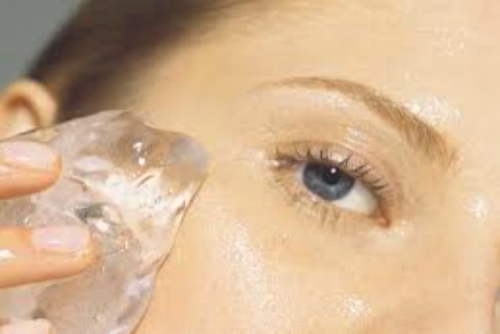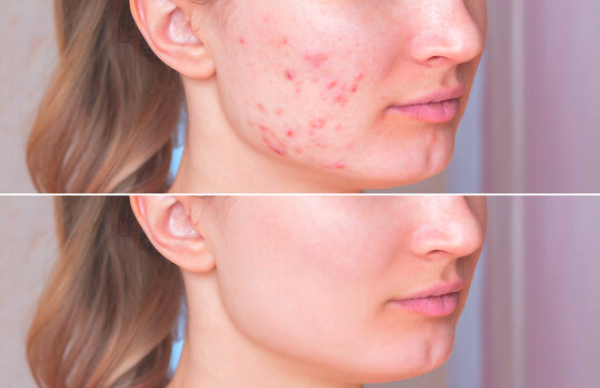Kinds of Acne and the ways to treat them
Acne types
All types of acne may occasionally be referred to as “breakouts,” but this isn’t necessarily an appropriate description. Some forms of acne do not spread over the skin.Kinds and treatments of acne.
Acne is brought on by blocked pores.
These could be a result of:
- excessive hormone
- bacterial synthesis of oil (sebum)
- expired skin cells
- Unwanted hairs
Although adult acne can occur, it is mostly linked to hormonal changes that occur throughout adolescence.Acne affects about 17 million people in the United States, making it one of the most prevalent skin disorders in both children and adults.The first step in a good treatment plan is figuring out what kind of acne you have.Acne may or may not be inflammatory. Acne subtypes that fall into these two groups include:
- blackheads
- whiteheads
- papules
- pustules
- nodules
- cysts
It is possible to experience various acne kinds simultaneously; in certain situations, the condition could be so bad that a dermatologist appointment is necessary. You can view dermatologists in your region using the Healthline FindCare tool if you have acne concerns and do not already have a dermatologist.
To find out more about the different types of acne and how to cure them, continue reading.
Acne that isn’t inflamed
Blackheads and whiteheads are examples of non-inflammatory acne. These typically don’t result in edoema. They also react to over-the-counter (OTC) medications fairly well.Although salicylic acid is frequently advertised for acne in general, it typically works better on noninflammatory acne. Blackheads and whiteheads can be prevented by eliminating dead skin cells that naturally exfoliate the skin. It can be found in moisturisers, toners, and cleaners.
Blackheads
Blackheads occur when a pore is clogged by a combination of sebum and dead skin cells. The top of the pore stays open, despite the rest of it being clogged. This results in the characteristic black color seen on the surface.
Whiteheads
A pore that is blocked by sebum and dead skin cells can potentially develop whiteheads. The top of the pore closes, unlike with blackheads, though. It resembles a spot of skin that is sticking out slightly.As a result of the restricted pores, treating whiteheads is more challenging. Salicylic acid-based products may be beneficial. When treating comedonal acne, topical retinoids work best. Adapalene is a retinoid that is currently sold without a prescription under the brand name Differin. Stronger topical retinoids can be obtained with a dermatologist’s prescription if this treatment does not work for you.
Acne flare’s up
Inflammatory acne is the name given to pimples that are red and swollen.Bacteria can contribute to pore obstruction in addition to sebum and dead skin cells, which are factors in inflammatory acne. Deep beneath the skin’s surface, bacteria can infect the body. This could cause excruciating, difficult-to-remove acne lesions.Benzoyl-peroxide-based products may aid in reducing edoema and eradicating microorganisms from the skin. Additionally, they can eliminate extra sebum. To treat your inflammatory acne, your doctor can advise both an oral and a topical antibiotic in addition to benzoyl peroxide. Combating inflammatory papules and pustules on the skin requires the use of topical retinoids as well.
Papules
Papules are caused by a severe inflammation that causes the walls enclosing your pores to tear. In turn, this causes tender-to-the-touch hard, congested pores. Pinkish skin typically surrounds these pores.
Pustules
When the walls enclosing your pores collapse, pustules can also result. Pustules contain pus in contrast to papules. In most cases, these lumps are red and protrude from the skin. On top, they frequently have heads that are yellow or white.
Nodules
Nodules develop when obstructed, swollen pores experience further irritation and enlarge. Nodules, as opposed to pustules and papules, are located deeper in the skin.Nodules are often difficult to treat at home because they are located so deeply within the skin. To help with this, prescription medication is recommended.
Isotretinoin will likely be prescribed orally by your dermatologist or physician (Sotret). For four to six months, this is taken daily and is made from a type of vitamin A. By reducing the size of the oil glands within the pores, it can both treat and prevent nodules.
Cysts
- Cysts can form when germs, sebum, and dead skin cells cause pores to get clogged. More below the skin’s surface than nodules are the clogs, which form deep inside the skin.
- Frequently uncomfortable to the touch, these huge red or white pimples. The most severe type of acne, cysts, are formed when an infection becomes very bad. The likelihood of scarring is highest for this kind of acne.For the treatment of cysts, doctors frequently prescribe the drug isotretinoin (Sotret). Your dermatologist might operate to remove a cyst if the situation is dire.
Do ice facials lessen puffy eyes and acne?
Cold treatment, sometimes called cryotherapy, is the practice of applying ice to a bodily part for therapeutic purposes.In the treatment of contusion injuries, it is frequently employed to:
- minimise swelling by temporarily decreasing blood flow
- reduce pain by momentarily diminishing nerve activity
- promote soft tissue repair to hasten functional recovery
The use of “skin icing,” often known as an ice facial, is suggested by its proponents to: - eliminate bloating
- lower oiliness,
- lessen acne,
- relieve sunbur
Putting ice on one’s face
Four or five ice cubes should be rolled in a soft cotton cloth, according to proponents of ice facials. After that, they advise gently massaging your face for a minute or two with the wrapped ice cubes.You can massage your body in a circular motion on your:
- jawline
- chin
- lips
- nose
- cheeks
- forehead

Aesthetic ice facials’ advantages
for swollen eyes, use ice
If you’re dealing with puffy eyes, consider combining ice therapy with antihistamines or anti-inflammatory drugs.
for acne, use ice
Skin icing proponents assert that it can lessen skin pores to lessen excessive oil production and slow down inflammation in the treatment of acne.owing to its anti-inflammatory propertiesAccording to a reliable source, ice has a higher chance of reducing inflammation in cases of acne, such as:
- cysts
- nodules
- pustules
- papules
If you’re using ice facials to treat acne, change the ice and the covering frequently to prevent the transfer of bacteria from one area of your face to another..
Ice made with aloe
Aloe vera is utilised for a variety of skin disorders by those who practise natural medicine. Aloe gel may hasten the healing of burns and lessen acne.Aloe that has been frozen is still believed to have therapeutic properties and can help with acne and sunburn. If you don’t have frozen aloe, according to proponents of this technique, you can still get the same results by applying aloe gel to your skin before performing your typical ice facial.
Ice made of green tea
As suggested by proponents of ice facials, utilising ice cubes made from green tea having dual properties of antibacterial and antiviral properties.
Advice for applying face icing
Discuss ice facials with your doctor or a skin care expert before trying one.
- Regarding your skin condition, any drugs you might be using, and your present state of health, they might have some worries or recommendations.
- Here are some suggestions to keep in mind if your healthcare provider gives you the go-ahead:
- On the ice cubes you’ll be using for your face, use a separate ice tray.
- After each use, clean it.
- Before applying icing, always wash your face.
- Keep a fresh washcloth or tissue nearby to wipe any possible facial liquid drips.
- Put some sort of barrier between the ice and your skin, such as a handkerchief. This will shield your face and hands.
different steps that katrina kaif’ do for ice facial
Step 1:
Grab a sizable bowl and make sure it’s big enough for you to submerge your entire face. Now, empty an entire ice tray and make sure to refill it every night so that you have ice cubes available to use for your facial every morning. After letting the ice melt, add half a cup of regular water to the basin, leaving the other half filled with ice. Allow the water to get high enough so that you can easily dunk your face into it.
Step 2:
Now secure your hair securely in a bun or pigtail, and pin any baby hair to prevent it from getting in the way as you work.
Step 3:
You just need to submerge your face for two seconds, then remove your face from the bowl and submerge it again for the remaining two seconds. Your face would feel numb and the ice water would seem quite cold, but your skin will quickly get used to this sensation.
Step: 4
To improve blood circulation, pat and massage your skin lightly each time you remove your face from the bowl.
Step 5:
You must perform the dipping procedure repeatedly before you are finished.
Every time she has some free time or wants to wake up looking radiant and very fresh, Katrina Kaif does this. She disclosed that she consistently performs this step in her skincare regimen in order to get beautiful skin. Since ice water is extremely cold, do not repeat the treatment if you get a small headache or any other uncomfortable sensation. Try this ice facial, but if you find that you can’t keep doing it because the water is too icy and dangerous for your health, there are still other ways to employ ice cubes for your skin.
Skin care Therapies
A topical medication with prescription strength is often needed to treat mild to moderate inflammatory acne, according to Schoor.These items often include substances such as:
- antibiotics such as erythromycin and clindamycin,
- retinoids such as adapalene, isotretinoin, motretinide, and retinoyl-glucuronide
- azelaic acid
- Peels using benzoyl peroxide
- corticosteroids
- hydoxyperoxide
- dapsone
- N-Acetylniacinamide;
- Salicylic Acid
- sulphur,
- triclosan,
- sodium sulfacetamide
Skin care Therapies
Inflammatory acne may be treated with oral antibiotics. The most typical ones are:
- tetracyclines such as doxycycline, minocycline, and lymecycline
- co-trimoxazole
- fluoroquinolones such as levofloxacin
- macrolides such as erythromycin, clindamycin, azithromycin, and roxithromycin
According to Schoor, spironolactone, a water tablet often used to manage blood pressure, may be useful in treating hormonal acne but is to be avoided during pregnancy.
Schoor points out that oral antibiotics are not a permanent fix and are frequently used in conjunction with other, frequently topical treatments for maximum efficiency.For fear of antibiotic resistance and side effects, oral antibiotics are only prescribed for a three-month period, according to the author.
Injections
According to Schoor, cortisone injections can hasten the clearance of a deeper nodule or cyst.
Light-based interventions using lasers
According to Schoor, people who want to avoid taking medicine occasionally choose laser therapy.
There are numerous sources available, including:
- full-spectrum
- fluorescent lighting
Metal halide lights in the following colours: - green lights
- voilet light
- flashing xenon lamps
- laser
home health care
Sometimes OTC and natural therapies can be used to treat mild, comedonal, and scar-free acne.components available over the counter
If you’re looking to treat and lessen the appearance of acne, experts and studies indicate that the following components are the best to try:
- Azelaic acid
- benzoyl peroxide
- salicylic acid
- nicotinamide
- peptides
- glycolic acid
- vitamin A
Benzoyl peroxide
According to Schoor, over-the-counter treatments containing benzoyl peroxide can help clear clogged pores and lessen comedones. It’s efficient, according to Maclellan as well. It can irritate the skin, though, much like its prescription equivalent.
Gels and lotions commonly include benzoyl peroxide. 2.5% to 10% benzoyl peroxide concentrations are offered over-the-counter. according to searcher review.
Salicylic acid
Schoor claims that OTC salicylic acid solutions help to clear pores and treat comedones, much like benzoyl peroxide does. It is often milder than benzoyl peroxide, according to Maclellan.
accordin to searcherthat products may contain salicylic acid at levels ranging from 0.05% to 5%. Researchers highlighted that although outcomes from OTC concentrations may be minor, it may help the way acne looks.
Nicotinamide
Both over-the-counter drugs and supplements include niacinamide. 10 studies recommended further investigation, however two studies on oral nicotinamide supplementation found that it significantly reduced acne.
Peptides
A 2021 reviewTrusted Source listed antimicrobial peptides as a promising treatment for acne. This ingredient reduces bacteria, a trigger for acne, though more research is needed to confirm its effectiveness.
The azelaic acid
A naturally occurring substance with antibacterial and anti-inflammatory properties, azelaic acid is present in cleansers and lotion.according to opinion suggested that it might aid in the management of acne and post-inflammatory discolouration.
Glycolic acid
Schoor says glycolic acid is good for exfoliation, which can help with cell turnover. according to opinion shown that glycolic acid could be a useful OTC acne therapy even at doses as low as 0.2%.
Vitamin A
Retinols and retinoids are both vitamin A derivatives, but retinoids typically require a prescription.
Differin gel is the only retinoid that’s currently available OTC.
Schoor says it’s very effective in treating acne, and that OTC retinols are often effective at treating mild forms of acne as well.
In studies, the following components have been identified:
- Tea tree oil
- green tea
- Copaiba oil minerals
- clays
- seaweeds
- basil essential oil
Green tea
Green tea A study from 2019 Green tea extract reportedly possesses anti-inflammatory qualities, according to a reliable source.Epigallocatechin-3-gallate (EGCG), the primary polyphenol in green tea, may have sebo-suppressive properties. According to a 2016 review by Trusted Source, it provides anti-inflammatory advantages and inhibits the growth of P.
The 2016 study observed that additional trials on the effectiveness of green tea in treating acne revealed no change
Oil of tea tree
For mild to moderate acne, a said that tea tree essential oil might be just as effective as topical benzoyl peroxide or salicylic acid. However, researchers pointed out that the evidence was of poor quality.



